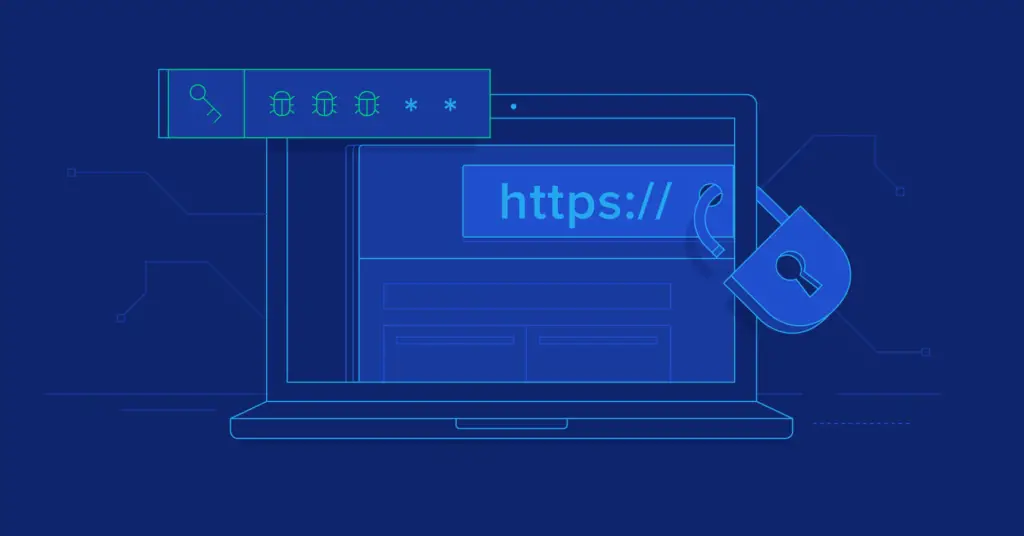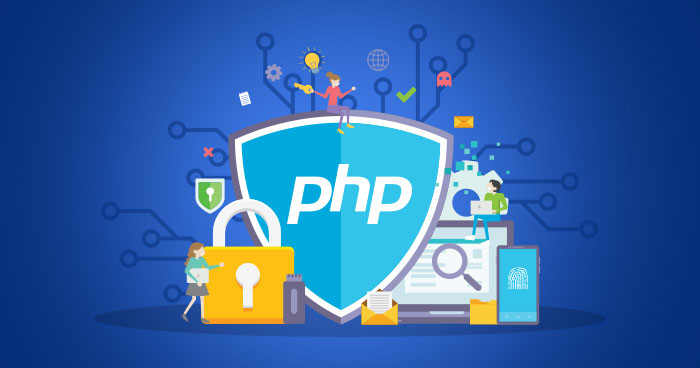Inside this article we will see the concept i.e PHP Security Best Practices: Keeping Your Web Application Safe. Article contains the classified information i.e How to secure PHP web applications and prevent attacks.
As one of the most widely-used programming languages for web development, PHP has a massive user base. But with this popularity comes the risk of security vulnerabilities. In this article, we’ll explore some of the best practices for keeping your PHP-based web application secure.
Read More: How To Extract Email Addresses From a String in PHP
Let’s get started.
Best PHP Security Tips You Should Know
PHP security refers to the practices and measures taken to protect PHP-based web applications from security vulnerabilities and threats, such as SQL injection, cross-site scripting, and session hijacking. PHP security involves techniques such as input validation, parameterized queries, encryption, authentication, authorization, limiting access to sensitive information, and implementing session management.

By following best practices for PHP security, developers can help prevent data breaches and other security incidents that can compromise the confidentiality, integrity, and availability of web applications.
Use Parameterized Queries
One of the most common security vulnerabilities in web applications is SQL injection. This happens when an attacker is able to inject malicious SQL code into a query by exploiting a poorly designed input validation mechanism.
To prevent SQL injection, it is recommended to use parameterized queries. A parameterized query uses placeholders to represent the values that will be used in the query, rather than concatenating user input directly into the query.

This ensures that user input is properly sanitized and doesn’t create any opportunities for SQL injection.
Read More: How To Enable CORS for Multiple Domains in PHP
A Basic Example
Here’s an example of using parameterized queries in PHP using PDO (PHP Data Objects), which is a database abstraction layer that provides a consistent interface for accessing various database systems:
<?php
// Create a PDO instance to connect to the database
$dsn = 'mysql:host=localhost;dbname=mydatabase';
$username = 'myusername';
$password = 'mypassword';
$options = array(
PDO::ATTR_ERRMODE => PDO::ERRMODE_EXCEPTION
);
$pdo = new PDO($dsn, $username, $password, $options);
// Prepare a parameterized SQL query
$stmt = $pdo->prepare('SELECT * FROM users WHERE username = :username');
// Bind a value to the :username parameter
$username = 'johndoe';
$stmt->bindParam(':username', $username);
// Execute the query
$stmt->execute();
// Fetch the results
$results = $stmt->fetchAll(PDO::FETCH_ASSOC);
// Print the results
foreach ($results as $row) {
echo $row['username'] . "\n";
}
In this example, we’re using PDO to connect to a MySQL database and retrieve data from a “users” table. The SQL query includes a parameterized placeholder <strong>:username</strong>, which we bind to the value '<strong>johndoe</strong>' using the <strong>bindParam()</strong> method. This ensures that the value is properly sanitized and prevents SQL injection attacks. We then execute the query and fetch the results using <strong>fetchAll()</strong>. Finally, we print the usernames of all the matching rows.
Validate Input Data
Another common security vulnerability is cross-site scripting (XSS), which happens when an attacker is able to inject malicious code into a web page. This can happen if an application fails to properly validate user input data.
To prevent XSS, it is recommended to validate all user input data and sanitize it appropriately. This can include removing special characters and HTML tags, and escaping any user-generated content.
A Basic Example
Here’s an example of validating input data in PHP:
<?php
// Validate a user's email address
$email = 'user@example.com';
if (!filter_var($email, FILTER_VALIDATE_EMAIL)) {
echo "Invalid email format";
}
// Sanitize user input data
$name = 'John <script>alert("hello!");</script> Doe';
$sanitized_name = filter_var($name, FILTER_SANITIZE_STRING);
// Strip HTML and PHP tags from user input data
$comment = '<b>Hello</b> <i>world</i> <script>alert("xss!");</script>';
$stripped_comment = strip_tags($comment);
// Escape user-generated content for safe output
$unescaped_content = '<a href="http://example.com/">Example</a>';
$escaped_content = htmlspecialchars($unescaped_content, ENT_QUOTES, 'UTF-8');
In this example, we’re using various PHP functions to validate, sanitize, and escape user input data. First, we’re validating a user’s email address using the <strong>FILTER_VALIDATE_EMAIL</strong> filter. If the email address is invalid, we’re printing an error message.
Read More: How To Show and Hide Password Field Text Using jQuery
Next, we’re sanitizing a user’s name using the <strong>FILTER_SANITIZE_STRING</strong> filter, which removes any tags and special characters that could be used for cross-site scripting attacks.
Then, we’re stripping HTML and PHP tags from a user’s comment using the <strong>strip_tags()</strong> function, which prevents any embedded scripts or styles from being executed.
Finally, we’re escaping user-generated content using the <strong>htmlspecialchars()</strong> function, which replaces special characters with their HTML entities to prevent cross-site scripting attacks.
Use Encryption
Sensitive information such as passwords and credit card numbers should always be encrypted when being transmitted over the internet. This is particularly important when working with forms and login pages.

To ensure that data is encrypted, it is recommended to use HTTPS and SSL/TLS certificates. These will encrypt data in transit, preventing attackers from intercepting sensitive information.
A Basic Example
Here’s an example of using encryption:
<?php
// Generate a random encryption key
$key = openssl_random_pseudo_bytes(32);
// Encrypt a message using AES-256-CBC encryption
$message = "Hello, world!";
$iv = openssl_random_pseudo_bytes(openssl_cipher_iv_length('aes-256-cbc'));
$encrypted = openssl_encrypt($message, 'aes-256-cbc', $key, OPENSSL_RAW_DATA, $iv);
// Decrypt the message
$decrypted = openssl_decrypt($encrypted, 'aes-256-cbc', $key, OPENSSL_RAW_DATA, $iv);
// Print the results
echo "Original message: $message\n";
echo "Encrypted message: " . base64_encode($encrypted) . "\n";
echo "Decrypted message: $decrypted\n";
In this example, we’re using the OpenSSL extension in PHP to generate a random encryption key, which is used to encrypt and decrypt a message using AES-256-CBC encryption. We’re also using a random initialization vector (IV) to add an extra layer of security to the encryption.
We first generate a random encryption key using <strong>openssl_random_pseudo_bytes()</strong>. We then encrypt the message “Hello, world!” using <strong>openssl_encrypt()</strong>, specifying the encryption algorithm, key, and IV. We then print the encrypted message, which is in binary format, using <strong>base64_encode()</strong> to make it readable.
Keep Your Code Up-to-Date
As with any software, PHP and its associated libraries and frameworks can have security vulnerabilities that are discovered over time. To stay secure, it is important to keep your code up-to-date with the latest security patches and releases.
This includes both the PHP language itself and any third-party libraries or frameworks that your application depends on.
Read More: Best Practices for Writing High-Quality JavaScript Code
Use Authentication and Authorization Mechanisms
Authentication and authorization are key components of any web application security strategy. Authentication is the process of verifying that a user is who they claim to be, while authorization is the process of determining what actions a user is allowed to perform.
To ensure that your web application is secure, it is recommended to implement strong authentication and authorization mechanisms, such as two-factor authentication and role-based access control.
Limit Access to Sensitive Information
Another best practice for securing PHP-based web applications is to limit access to sensitive information. This can include things like user account data, server configuration details, and application logs.

By restricting access to this information, you can prevent attackers from gaining valuable insights into your application’s inner workings.
Implement Session Management
Session management is another important aspect of web application security. Sessions are used to maintain state between HTTP requests, such as when a user logs into an application. To ensure that sessions are secure, it is recommended to implement measures such as session ID regeneration, session timeout, and secure cookie settings.
Conclusion
PHP is a powerful and flexible programming language for web development, but it’s important to be aware of its security vulnerabilities. By following these best practices for keeping your PHP-based web application secure, you can minimize the risk of data breaches and other security incidents. Whether you’re building a small blog or a large e-commerce site, these tips will help you stay safe and secure.
We hope this article helped you to learn PHP Security Best Practices: Keeping Your Web Application Safe in a very detailed way.
If you liked this article, then please subscribe to our YouTube Channel for PHP & it’s framework, WordPress, Node Js video tutorials. You can also find us on Twitter and Facebook.
